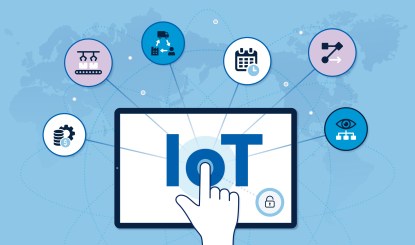No, IoT and Programmable Logic Controllers (PLCs) are not a new idea for manufacturers. However, the manufacturing industry has experienced significant changes in recent years, and technology has played a major role in this transformation. They have run, not walked, to implementing these devices all over their facilities. Why? Well, there are a few reasons, but first…
What is IoT?
IoT refers to the network of devices, sensors, and other objects that are connected to the internet and can exchange data with other devices. In the context of manufacturing, IoT involves the use of sensors and other devices to collect data on various aspects of the manufacturing process. This data can then be used to optimize the business’s operations, improve product quality, and reduce costs. Data is one of the most valuable assets in any business, because it enables leaders to make the right decisions that lead to happy clients and employees.
How IoT is Transforming Manufacturing
While IoT has the potential to radically change every industry, it will have a unique impact on manufacturing, such as:
- Predictive maintenance
One of the most significant benefits of IoT in manufacturing is predictive maintenance. By using sensors and other devices to monitor equipment, manufacturers can identify potential problems before they occur and take action to prevent them. This can help reduce downtime and maintenance costs, as well as improve equipment reliability and performance. Tools like Computerized Maintenance Management Systems and Asset Performance Management systems can be used to determine when and where issues within the manufacturing operation . These platforms track and manage the ongoing operational efficiency, maintenance needs, and health of the facility, with the capability of being viewed as an ecosystem within a dashboard.
- Quality control
By using sensors to monitor production lines, manufacturers can detect defects and other issues in real-time, allowing them to make adjustments before products are shipped to customers. This can help reduce waste, standardize and automate the quality control process, and improve customer satisfaction, without having to dedicate personnel to the task.
- Inventory management
Supply Chain Management can incorporate data from multiple systems across the business and externally, from suppliers and the market, to sync demand and supply forecasting to improving buying power, cost, production capacity, and inventory accuracy.
- Production monitoring
IoT also enables remote monitoring of manufacturing processes. This can be particularly useful in situations where equipment is located in remote or hazardous locations. By using sensors and other devices to monitor equipment, manufacturers can ensure that it is operating safely and efficiently, without the need for on-site personnel. Monitoring can be tied to KPIs and dashboards so that it can be continuously reviewed and improved, as well as identify areas where production may be lagging due to issues within the operation.
- Improved decision-making
IoT helps improve decision-making in manufacturing because the data IoT systems generate can be leveraged to make more informed business decisions. By providing real-time information on various aspects of the manufacturing process, manufacturers can make more informed decisions about production, quality control, revenue management, order management, billing, inventory, and other areas of the business so they can propel their organization into a better future, by improving efficiency, reducing costs, and increasing profitability.
- Smart devices
Many of the new IoT devices on the market are self and system-aware. This means that they can not only monitor processes, but also complete tasks using decision making based on AI models using data pulled from across the organization. This helps improve efficiency by removing delays in processing and automating simple tasks that would typically divert employee resources away from core business functions.
- Analytics
All of these IoT devices yield data, which can be used to improve quality, remove process bottlenecks, and more. IoT devices are able to provide real-time insight into operations, which reduces the time it takes to respond to issues and minimizes the disruption to your organization’s productivity. Deploying IoT devices can boost output and your organization’s bottom line by reducing the friction your operations encounter and giving insight into where your business should focus its efforts.
Conclusion
So, what has caused manufacturers to invest more heavily in IoT? Well, business are having to navigate a complex landscape like never-before and they must aim for profitability and growth without sacrificing quality and without increasing costs to consumers. They must plan for greater resiliency, security, scalability, and sustainability, not only for themselves, but also their suppliers. Manufacturers must do all of this while tackling the same workforce and supply constraints that others face. Manufacturing today is not easy, but IoT provides manufacturers with an advantage. By leveraging the power of IoT, manufacturers can create more agile and responsive businesses that are better equipped to meet the demands of a rapidly changing market.

